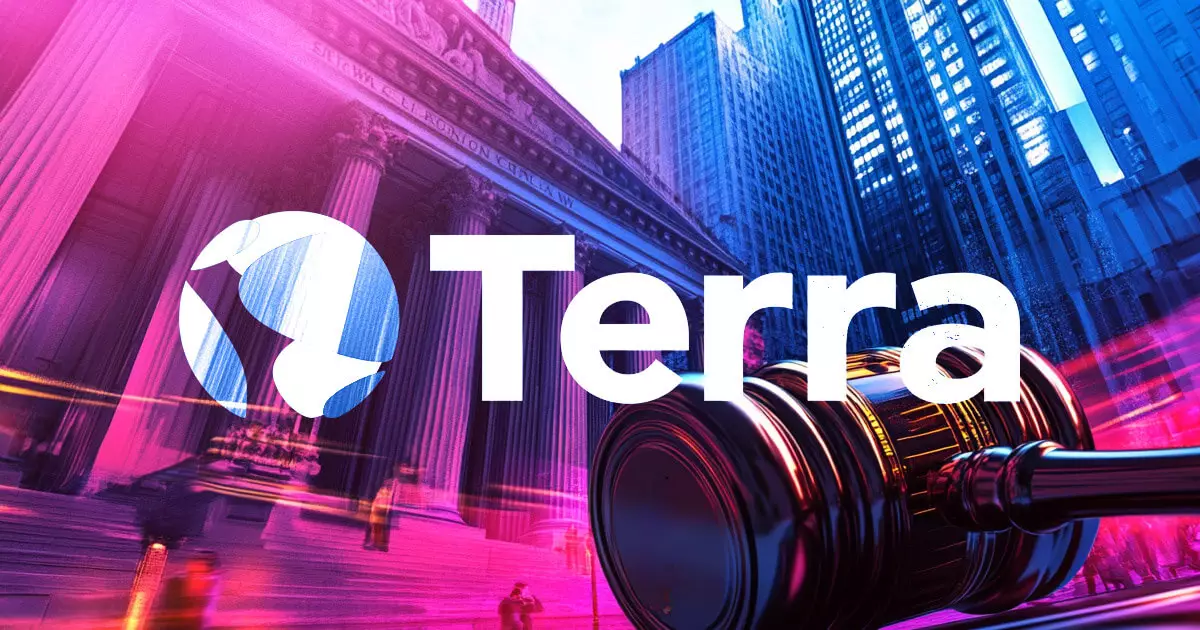The Securities and Exchange Commission (SEC) has recently taken a significant step in the ongoing scrutiny of the cryptocurrency sector by charging Tai Mo Shan Limited, a subsidiary of Jump Crypto, with misleading investors about the mechanics of the Terra USD (UST) stablecoin. The SEC’s allegations highlight the assertion that Tai Mo Shan engaged in trades designed to create a facade that UST’s price stability was a result of its algorithmic design, rather than external market interventions. This situation serves as a critical example of the complexities and risks inherent within the cryptocurrency ecosystem, especially concerning stablecoins, which are often viewed as safer digital assets due to their pegged value.
UST’s collapse in May 2021 was not just an isolated incident; rather, it was a pivotal moment that shed light on the vulnerabilities of algorithmically-managed stablecoins. The SEC claims that when UST began to lose its $1 peg, Terraform Labs relied on Tai Mo Shan to purchase over $20 million worth of UST to reinforce the digital asset’s value. This intervention was positioned as a means of proving the stability offered by the token’s algorithm but disclosed that external action was crucial for maintaining UST’s value. The crux of the SEC’s case lies in the notion that Terraform misrepresented the true mechanics sustaining UST, thereby misleading investors and market participants regarding the token’s reliability.
Moreover, the SEC’s documentation underscores how incentives to Tai Mo Shan allowed the firm to acquire LUNA tokens at a discounted rate when UST achieved stability. These findings starkly contrast Terraform’s public proclamations about UST’s operational integrity, suggesting that external buying pressure was central to preserving the coin’s peg to the dollar, thereby challenging the very foundation upon which the algorithmic token was built.
As a consequence of the SEC’s intervention, Tai Mo Shan has agreed to pay a staggering $123 million in penalties, which include disgorgement, prejudgment interest, and civil penalties. While such a hefty financial repercussion showcases the serious nature of the allegations, it also raises questions about the future regulatory landscape for crypto-related entities. The firm neither admits nor denies the findings, representing a strategic choice often made in negotiations with regulators to avoid prolonged litigation while signaling a willingness to comply with legal standards in the future.
The follow-up on these events has revealed that Terra’s broader ecosystem has faced heightened scrutiny following the collapse of UST. The fallout has led to Terraform Labs undergoing multiple legal challenges that could reshape the company’s operational viability and influence investor confidence across the digital asset space.
The liquidation of assets and restructuring efforts—including the establishment of a new token and the launch of a revised chain—reflect Terraform’s attempts to rebuild after the devastating consequences of the UST collapse. Despite these initiatives, the company continues to grapple with reputational damage, regulatory pressures, and financial instability. With values plummeting in both the original Terra Classic (LUNC) and the new iteration (LUNA), the path to recovery remains fraught with challenges.
In addition to the SEC’s investigations, the narrative surrounding Terraform has been further complicated by allegations of collusion involving prominent industry players, which could cast a wider net of inquiry into market practices and the integrity of token offerings. This situation is emblematic of a larger trend characterized by increasing regulatory scrutiny, pushing for clearer definitions and disclosures across the cryptocurrency landscape.
The SEC’s charge against Tai Mo Shan Limited highlights not only the regulatory challenges within the crypto sector but also the larger implications for investor trust and the credibility of stablecoin models. As regulators intensify their efforts, the fate of Terra and similar projects serves as a cautionary tale regarding transparency and adherence to securities laws. The unfolding developments will likely set precedents that could shape the future of cryptocurrency regulation, influencing how stablecoins and other cryptocurrencies are developed, marketed, and traded. As the industry collectively navigates these turbulent waters, stakeholders must brace for an era marked by increased oversight and demands for accountability.



















Leave a Reply